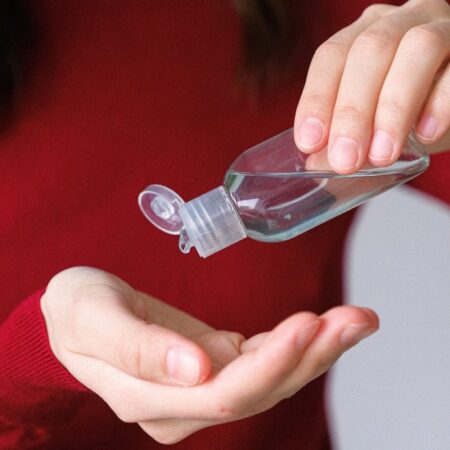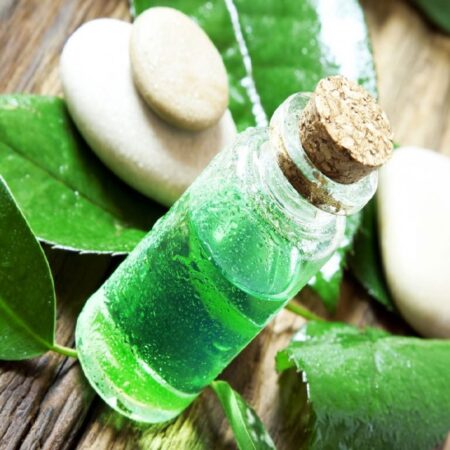
A dry nose is no disease or reason for worry, yet it can cause immense discomfort and pose potential health risks if not attended to. Apart from triggering a sinus attack, it can also cause nagging headaches that do not abate.
A dry or leaky nose can cause discomfort. In severe cases, it may result in vision problems and troubled breathing. The nose is the first line of defense, and it is absolutely necessary to take care of it to stay healthy. Mentioned below are a few home remedies to get rid of a dry nose.
What Is A Dry Nose?
A dry nose occurs when the internal nasal passages dry out. This can also cause crusting of the inner nose mucosa (1).
Here are the most effective home remedies for dry nose you can try to get relief from the condition.
Dry Nose Home Remedies
1. Coconut Oil
Coconut oil can help moisturize the skin and fill the gaps between the dry cells (2). Applying it to the nostrils can help prevent dryness and reduce pain. Make sure not to overdo this remedy.
You Will Need
Virgin coconut oil
What You Have To Do
Pour a drop or two of coconut oil in each nostril.
How Often You Should Do This
Do this once a day.
2. Saline Spray
Saline or saltwater is a simple home remedy for a dry nose, and it can be easily prepared at home. The salt water acts as a humidifier and keeps the nasal lining hydrated. It helps in clearing out mucus and irritants in the nasal passage (3).
Caution: Do not use table salt as it may contain other additives that can irritate the nasal mucosa further.
You Will Need
- 1 teaspoon pure salt or sea salt
- 1/2 cup water
- Spray bottle
What You Have To Do
- Mix the salt with the water and pour this into the spray bottle.
- Bend your head towards the floor and spritz the salt water a few times into the nasal cavities.
- You can also take some of the saline water in your palm and inhale it so that it reaches as far as possible in the sinus cavities. Blow it out after 10 seconds.
- You can also purchase empty nasal spray bottles. Most drugstores sell saline nasal sprays over the counter.
How Often You Should Do This
Use the saline spray 3-4 times a day.
3. Vitamin E Oil
Vitamin E oil helps increase the hydration of the skin and has antioxidant and anti-inflammatory properties (4), (5). A study shows that alpha-tocopherol (a type of vitamin E) could help in the treatment of pollen-induced allergic rhinitis (6). Hence, it may hydrate the nasal mucosa, relieve dryness, and accelerate the healing process of the nasal passages.
You Will Need
Vitamin E capsules
What You Have To Do
- Pierce the vitamin E capsule.
- Tilt your head upwards and pour two to three drops of the oil into the nostrils.
How Often You Should Do This
Do this 2 times a day.
Olive oil, like coconut oil, hydrates the skin inside the nasal passages, thus alleviating the dryness (7). It also relieves irritation and swelling (8).
4. Olive Oil
You Will Need
- Virgin olive oil
- Dropper
What You Have To Do
Using the dropper, pour a few drops of olive oil in the nostrils.
How Often You Should Do This
Repeat this 2 times daily.
5. Sesame Oil
The vitamin E content of sesame oil is higher than that of most other oils. It is a great moisturizer for dry skin. In a study, sesame oil was proven to work better than the saline irrigation method to relieve nasal dryness (9).
You Will Need
- Organic sesame oil
- Dropper
What You Have To Do
- Tilt your head backward and pour a drop of sesame oil in each nostril.
- Inhale deeply so that the oil reaches the internal nasal passages.
How Often You Should Do This
Do this 2 times a day.
6. Steam
The easiest way to get rid of a dry nose is to inhale steam at regular intervals. This soothing remedy softens the dried mucus in the nasal passages (10).
You Will Need
- Hot water
- A large bowl/basin
- A big towel
What You Have To Do
- Pour the hot water in the bowl.
- Cover your head with the towel and inhale the steam from the bowl for about 10 minutes.
- Blow your nose gently after this.
How Often You Should Do This
Inhale steam 2-4 times a day.
7. Humidifier
Dryness in the environment can worsen a dry nose and trigger congestion. Maintaining humidity in the room where you spend most of the day is a necessity in frigid weather conditions.
Humidifiers or vaporizers are used to add moisture to the surroundings and can ease symptoms, such as irritation in the nose and dryness (11). In the absence of humidifiers, water-filled buckets can be placed near heating systems to create ambient humidity.
8. Sauna
Who doesn’t love a sauna bath? It is one of the best ways to treat dry nose and sore muscles. If you don’t prefer a sauna bath, simply heat a bath, add a few drops of aroma oil to it, and soak in its goodness for a few minutes. Do not stay in long unless you wish to get a leaky nose in exchange for a dry one.
Warning
One remedy that people often tend to resort to for obtaining relief from a dry nose is using petroleum jelly. However, this remedy is not recommended by doctors. The internal application of petroleum jelly has been linked to a type of pneumonia (12). Hence, steer clear of this home remedy.
The above-listed were rather simple home remedies for dry nose, weren’t they? Along with these home remedies, follow a diet rich in protein to help in fighting the infection. In case of any side effects, stop using the particular remedy, and try a milder one. In case the condition progresses to bleeding and breathing troubles, consult your doctor immediately.
Expert’s Answers for Readers Questions
Q. What causes a dry nose?
A. The common causes of a dry nose range from air conditioning and dehydration to the side effects of medications, such as decongestants and antihistamines.
Q. Is a dry nose a serious symptom?
A. A dry nose results in nasal irritation, itching, swelling, wheezing, and bleeding from the nose. When this dryness lasts for more than 10 days, you should consult your doctor as it may indicate serious underlying conditions, such as Sjogren’s syndrome. Also, if you experience symptoms related to infections, such as high fever, nonstop bleeding, and lethargy, consult your doctor immediately.
Q. What are the potential complications of a dry nose?
A. The potential complications of a dry nose include dry skin, blurred vision, skin rashes, wheezing, and other breathing problems.
Q. What to eat and avoid to relieve a dry nose?
- Drink enough fluids. The depletion of body fluids makes the body tissues dry. Plenty of water is required to make the nasal tissues work efficiently. Drink a minimum of eight to ten glasses of water per day.
- Having hot and spicy food or liquid items, for example, chicken soup, can moisten the nostrils and give you some relief.
- Reduce your caffeine, alcohol, and salt intake as these are dehydrating agents. If you have a dry nose, avoid consuming these foods.
- Cut down on any medication that increases the dryness after consulting your doctor. Medications tend to dehydrate the body, which often causes dry nasal passages. Keep your body properly hydrated if you need to take a high dose of medicine due to any existing illness.




























